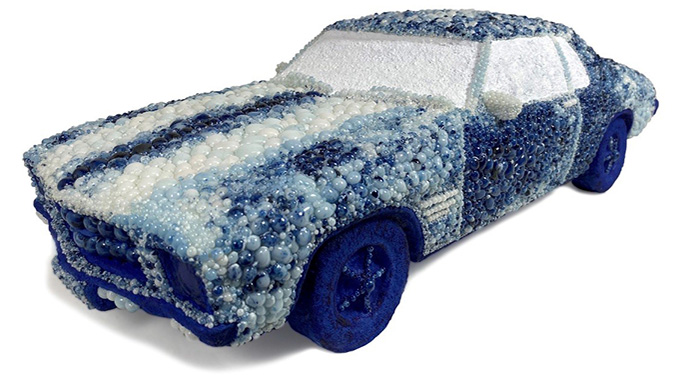 Dream Factory – a stunning exhibition that goes behind the scenes of Australia’s most important industrial design studio and birthplace of GMH iconic cars at Fishermans Bend has opened at City Gallery – Melbourne Town Hall.
Dream Factory – a stunning exhibition that goes behind the scenes of Australia’s most important industrial design studio and birthplace of GMH iconic cars at Fishermans Bend has opened at City Gallery – Melbourne Town Hall.
From Aussie classics to contemporary concept cars, Dream Factory takes a tour through almost 60 years of design by way of rarely seen drawings, models, photographs, film and memories from key designers, showcasing one of Australia’s most important industrial design studios, the Technical Centre, at Fishermans Bend.
“Dream Factory is a celebration of form and function and demonstrates how the successful design and production of complex industrial objects put Australia on the post war global stage of automotive design,” says curator Harriet Edquist.
Opened in 1964 and scarcely known outside the world of GMH, the Technical Centre was a powerhouse of design and one of the most successful industrial design studios in Australia.
The drawings on display represent the work of nine designers covering a span of more than 50 years. Accompanied by quotations about style, technique and intent, the exhibition explores the activity of design and Australia’s industrial design history.
Some of GMH’s most significant and recognised cars are represented – the HK and HQ Monaro (Wheels Magazine’s Car of the Year in 1968), the LC and LJ Torana, the Statesman, the VN and VT Commodore, the Bathurst TR-X Torana and the eye-catching Hurricane concept car, on display as a scale model (on loan from the GMH).
Dream Factory also features a commissioned work by ceramicist Jia Jia Chen, Dream my Monaro. The scale model is both a homage to those who lovingly embellish their cars, and an envisioning of Jia Jia’s own ‘dream machine’ fabrication.
The Fishermans Bend studio is emblematic of the area’s strong history of research, design and technical innovation, determining what came off the production lines in Melbourne and other GMH production centres in Australia.
It was one of only three GM design centres in the world, the other two located in Detroit, the home of GM and in Russelsheim am Main, Germany.
The launch of the Technical Centre in June 1964 coincided with the opening in Germany. On launch day, the public were allowed to visit the buildings, to walk freely among its exhibits, then from that day on, the studios were forever closed to the public.
The Technical centre was an integral part of Australia’s booming post-war manufacturing sector, demanding new plants, specialised facilities and head offices. Melbourne based architects Stephenson & Turner were commissioned to design the Technical Centre in their well-tuned idiom of rationalist modernism. Plans for the building and interior artwork are also on display.
The City of Melbourne is proud to present Dream Factory in the City Gallery, to shine a light on the highly successful and important era of design excellence nationally and internationally, all from within the city perimeter.
Harriet Edquist is an historian and Emeritus Professor in the School of Architecture and Urban Design at RMIT. She was founding director of the RMIT Design Archives 2007–2020 and inaugural president of Automotive Historians Australia 2015–2019.
Dream Factory: GMH Design at Fishermans Bend 1964–2020
City Gallery – Melbourne Town Hall, Swanston Street, Melbourne
Exhibition: 17 May to 31 August 2021
Free entry
For more information, visit: www.melbourne.vic.gov.au for details.
Image: Jia Jia Chen, Dream my Monaro, 2020 (City of Melbourne Art and Heritage Collection)
